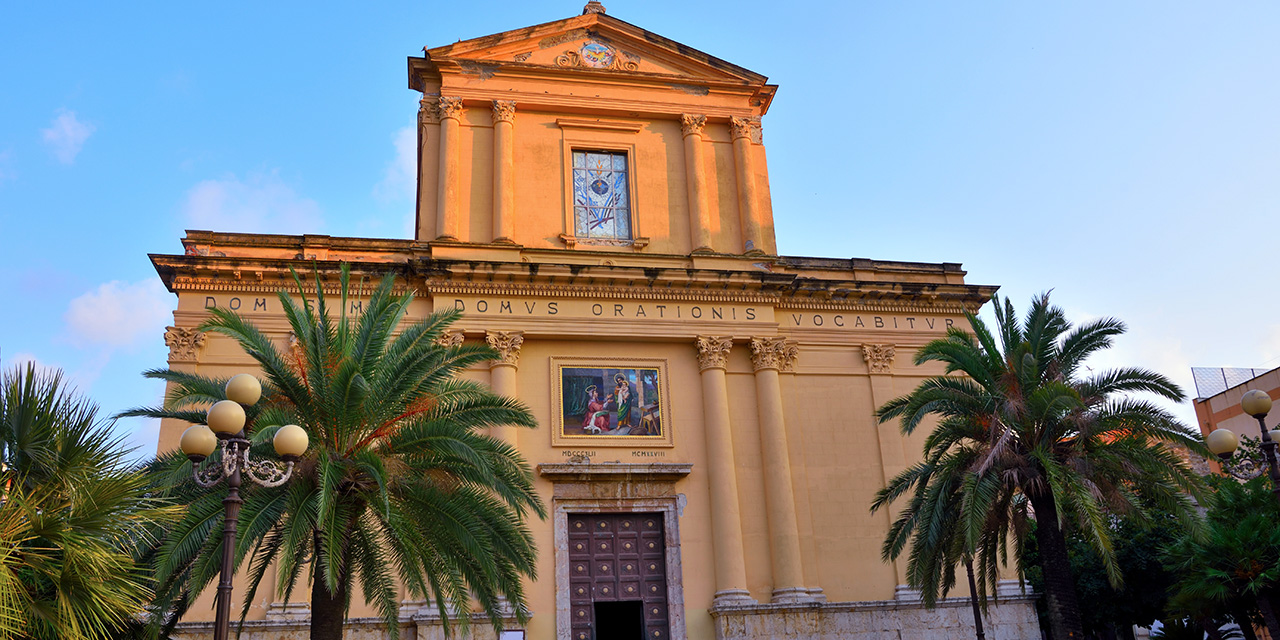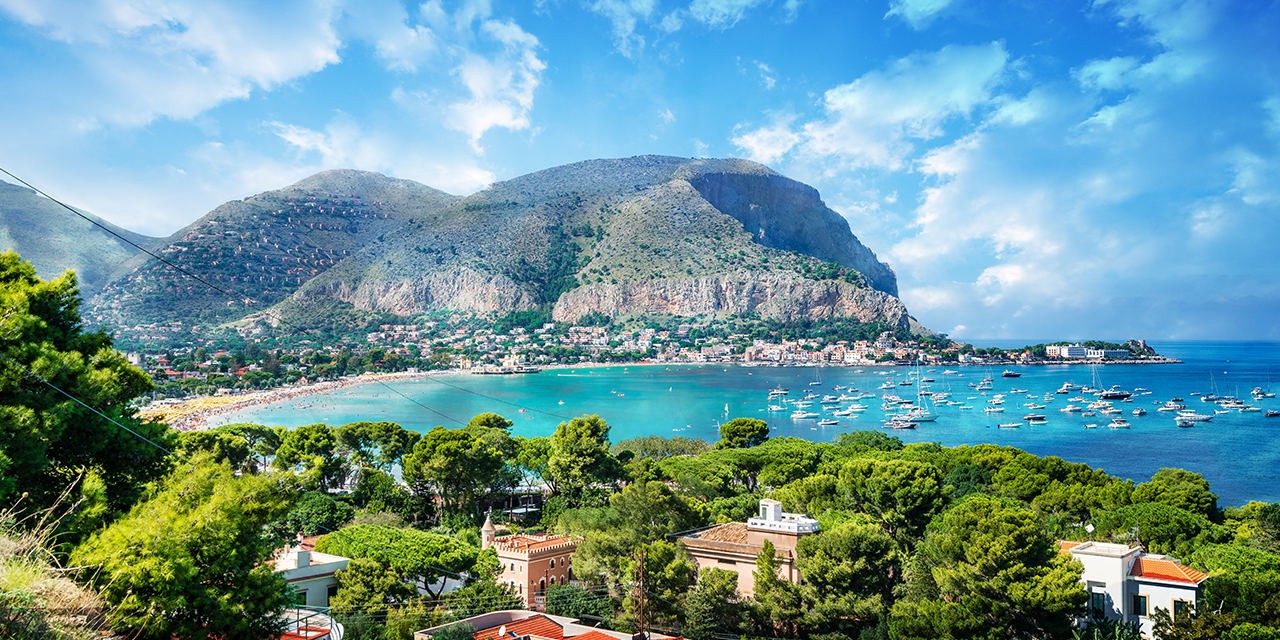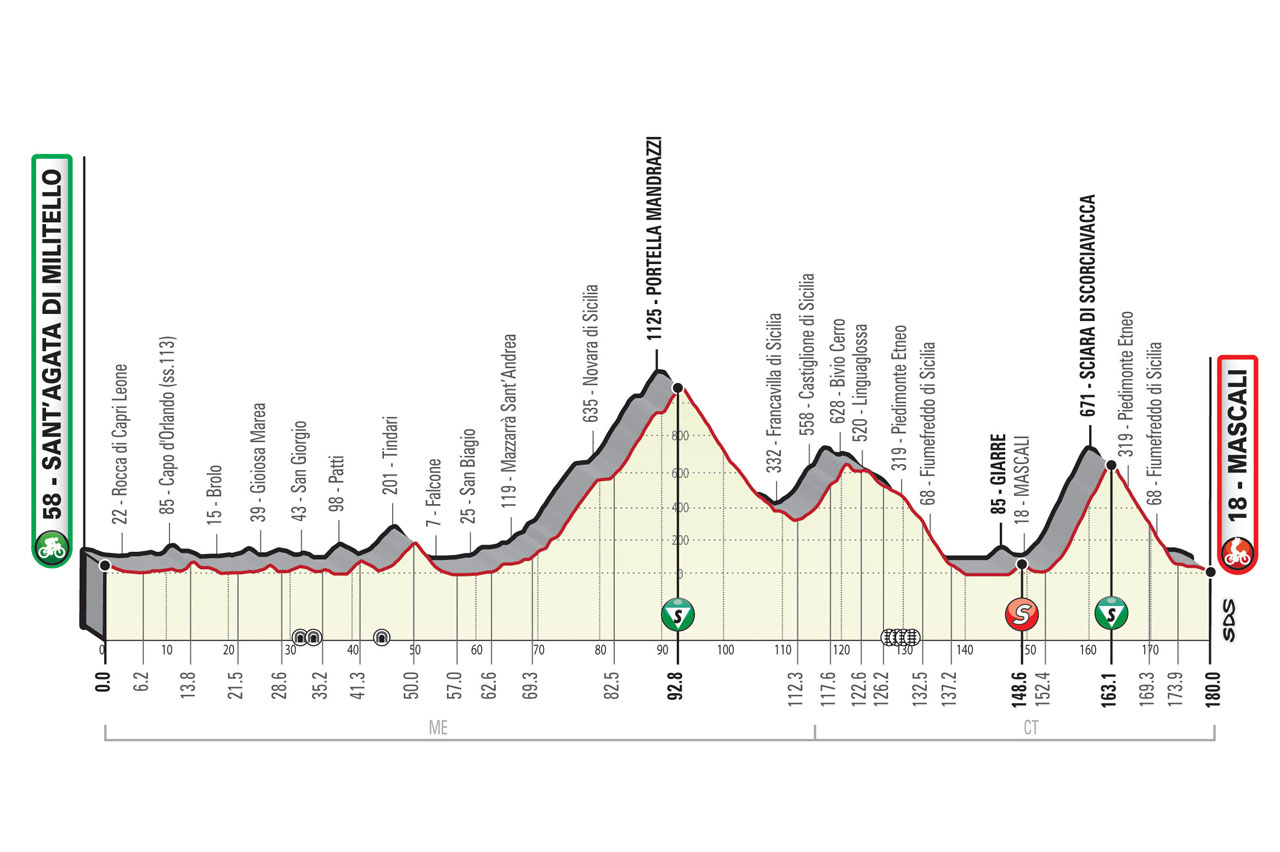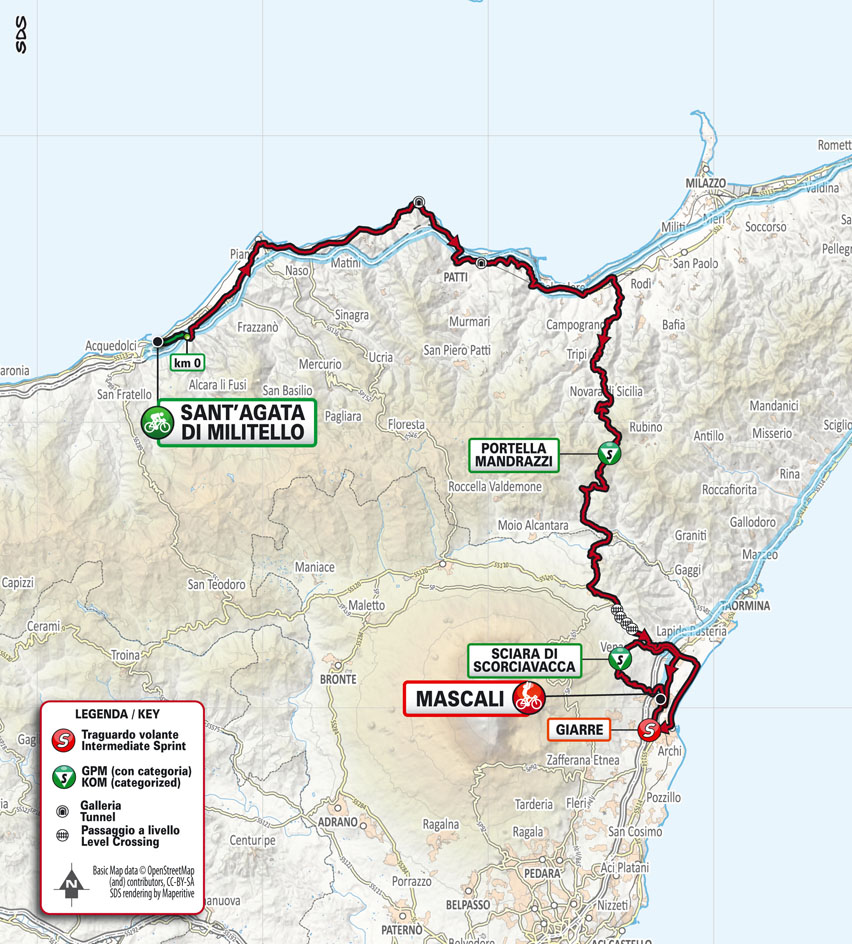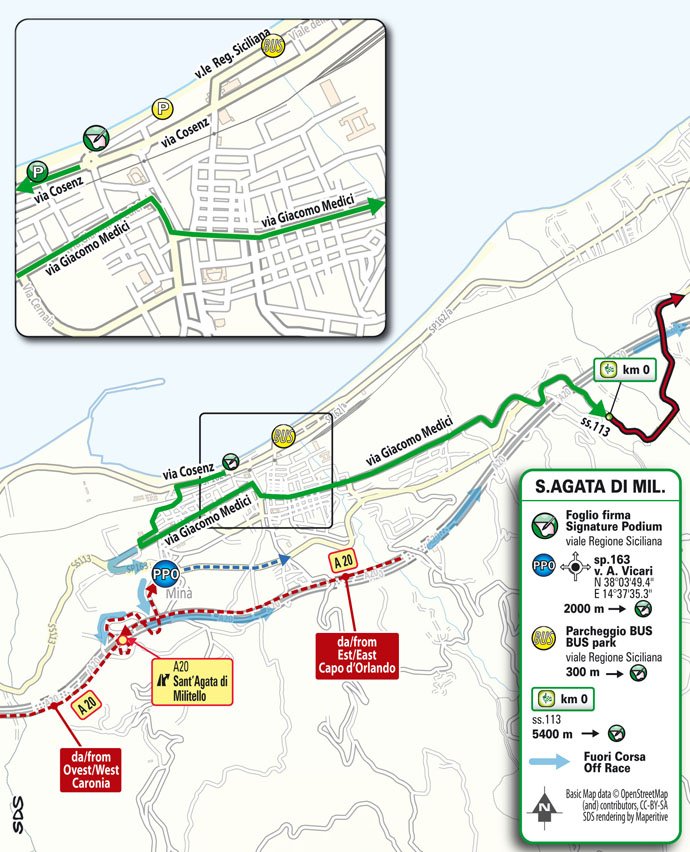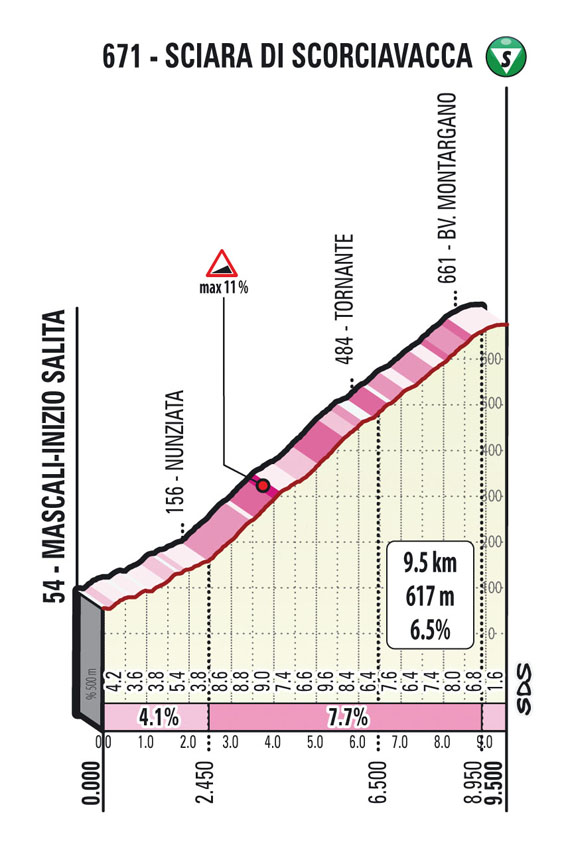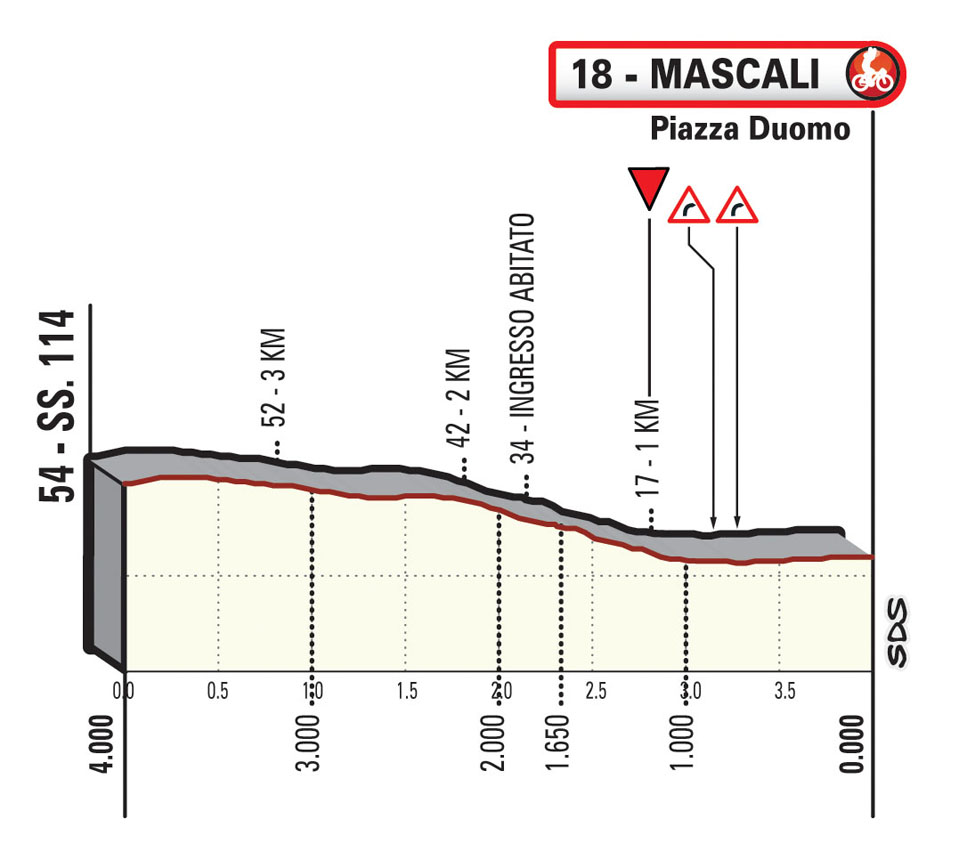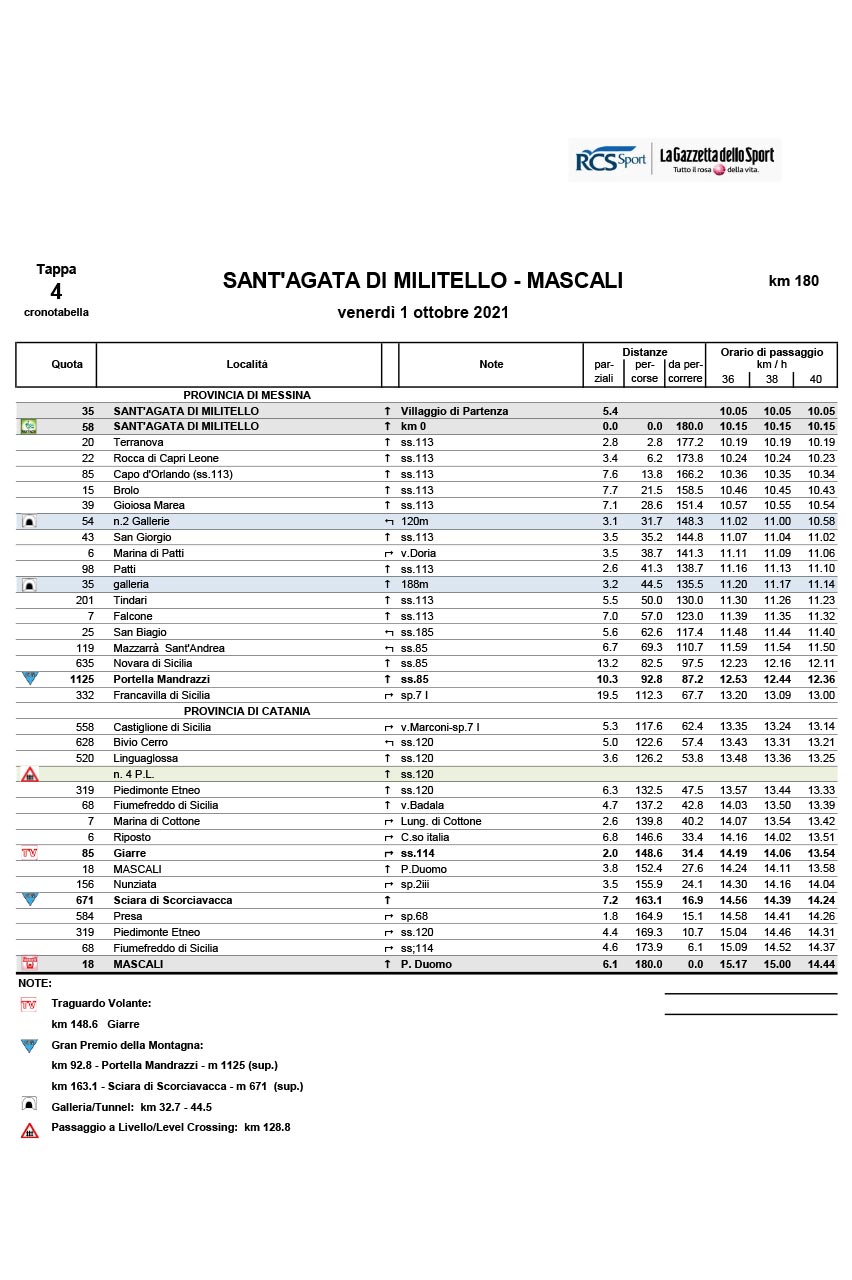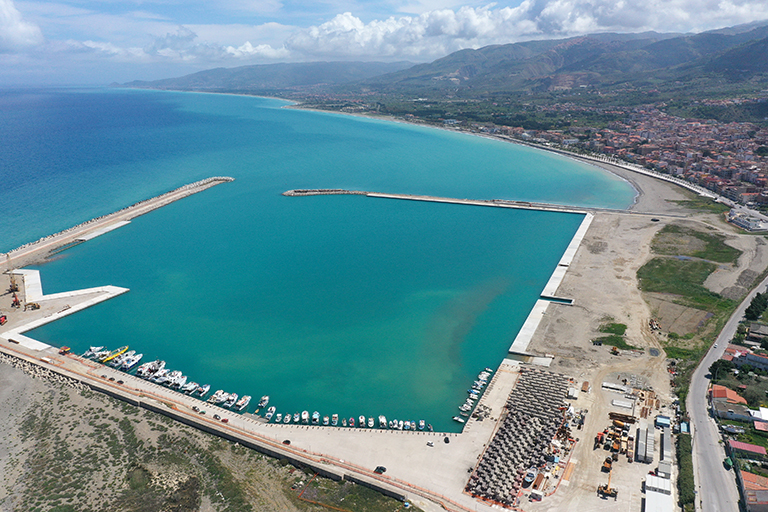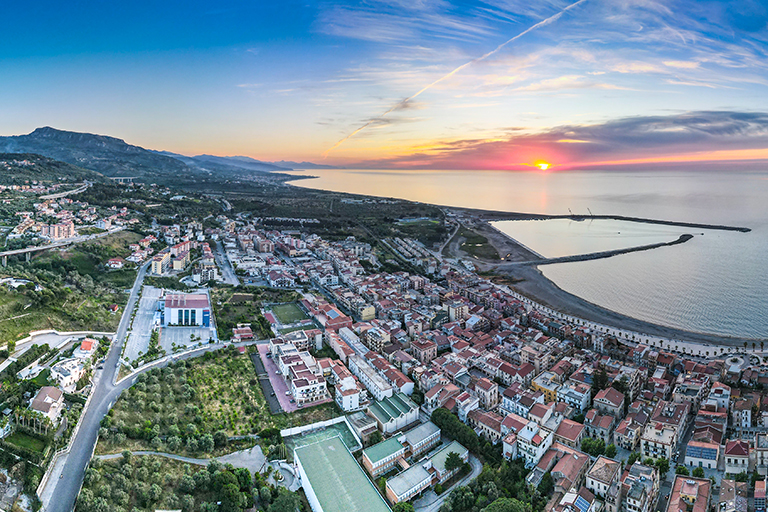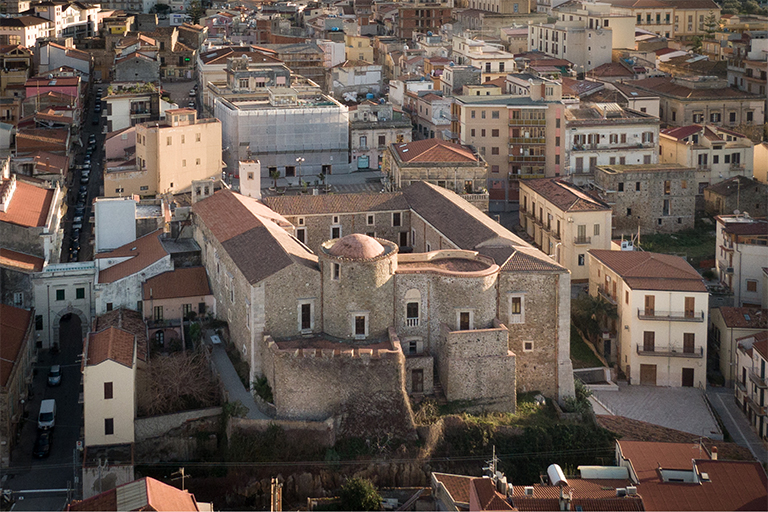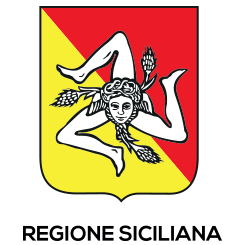profile
map
technical info
The route
This will be a full mountain stage, finishing by the sea. The route starts along the coast and then takes in the Portella Mandrazzi climb, all the way to the foot of the Etna. After a short flat stage leading to Linguaglossa and Piedimonte Etneo, the route descends towards the sea in Riposto. After a first pass on the finish line, the route takes in the Sciara di Scorciavacca ascent (one of the many slopes of the Etna), which leads back onto the previous descent in Piedimonte Etneo. A fast‑running descent leads through Fiumefreddo di Sicilia, all the way to the finish in Mascali.
Final kilometres
The final kilometres, inside the urban area of Mascali, are nearly flat. Two separated bends, forming a large U‑turn, eventually lead onto the home straight, on a slight incline.
start / finish
climb detail
final kilometres
itinerary timetable
tourist info
Host city:
Sant’Agata di Militello
Touristic information
Sant’Agata di Militello is a lovely town within the Nebrodi Park. Major landmarks include the imposing Castello Gallego with two round mediaeval towers, and the adjacent chapel, which contains paintings and wooden statues dating back to the 18th and 19th centuries.
The town hosts a number of traditional events, including the celebrations for the patron saint, San Giuseppe, the iconic boat procession of Maria Santissima del Mare, and one of the major trade shows in Sicily, called Fiera Storica, which is held twice a year (in April and in November), with over 500 exhibition booths.
Points of interest
Standing in the town centre, the beautiful church of Santa Maria del Carmelo is a jewel of architecture, with its iconic bell gable and clock tower.
Many aristocratic houses, built in the early 19th century onwards when the town was developing and expanding, hold valuable neoclassical and Art Nouveau frescoes.
A beautiful neoclassical building overlooking Piazza Vincenzo Consolo serves as the seat of the “Circolo Dante Alighieri”, which was founded in 1868 and is still a venue for cultural events.
Major local historical and anthropological finds are on display at the Museo dei Nebrodi.
Mascali
Touristic information
The municipal territory of Mascali ranges from the mountains to the sea, with a rich variety of climates and landscapes. The old town was destroyed by a volcanic eruption in 1928, and the urban centre was then rebuilt in the 1930s.
Gastronomy
Traditional specialties include a local grape variety known as Nerello Mascalese, and a local varietal of green bean called ‘fagiolino mascalese’, which makes for excellent stews either with or without tomato sauce.
Points of interest
The 20th century church of San Leonardo Abate was built in the central town piazza after the 1928 eruption. Inside, it holds the relic of the patron saint. The beautiful mediaeval and early‑Christian church of Santissima Annunziata contains fine Byzantine frescoes dating back to the 12th century. The adjacent early‑Christian basilica holds valuable polychrome mosaics dating back to the 6th century.
A small patch of wetland called the “Gurna”, along the coastline, serves as home or as migration corridor for many animal species.
The nearby seaside village of Fondachello is a major tourist centre, with deep and cold waters.


